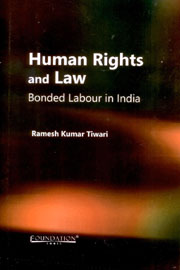Book contents
- Frontmatter
- Contents
- List of Tables
- Foreword
- Preface
- 1 Introduction
- 2 Slavery and Debt Bondage in British India: Policy and Implementation
- 3 Debt Bondage during the Post-Independence Period: Policy Developments
- 4 Problems in the Implementation of Bonded Labour System (Abolition) Act, 1976
- 5 Rehabilitation of Released Bonded Labourers
- 6 Judicial Intervention
- Conclusion
- Appendices
- Glossary
- Biographical Notes
- Bibliographical Essay
- Index
5 - Rehabilitation of Released Bonded Labourers
Published online by Cambridge University Press: 26 October 2011
- Frontmatter
- Contents
- List of Tables
- Foreword
- Preface
- 1 Introduction
- 2 Slavery and Debt Bondage in British India: Policy and Implementation
- 3 Debt Bondage during the Post-Independence Period: Policy Developments
- 4 Problems in the Implementation of Bonded Labour System (Abolition) Act, 1976
- 5 Rehabilitation of Released Bonded Labourers
- 6 Judicial Intervention
- Conclusion
- Appendices
- Glossary
- Biographical Notes
- Bibliographical Essay
- Index
Summary
The official assessment regarding the rehabilitation of released bonded labourers started immediately after the commencement of the Bonded Labour System (Abolition) Ordinance. It was felt that a systematic strategy for the economic rehabilitation of bonded labourers was necessary. The following are the main features of the strategy:
To provide consumption credit to the freed bonded labourer till his income exceeds the subsistence level;
to ensure that bonded labourers get preferential treatment in respect of the distribution of vested land;
a scheme for lower interest rates for the bonded labourers should be worked out;
the state governments should lay down rules for keeping registers, to show how incomes of bonded labourers are increasing and also to record the number of bonded labourers who revert to some form of servitude;
before launching rehabilitation programmes, it is necessary to locate the areas where it is prevalent, identify the persons being employed as bonded labourers and ascertain the magnitude of the problem;
the bonded labourers have to be provided sustained rehabilitation so as to break the link from their past. The programme for the re habilitation of the bonded labourer has to be an education-cum-economic programme;
[…]
- Type
- Chapter
- Information
- Human Rights and LawBonded Labour in India, pp. 89 - 98Publisher: Foundation BooksPrint publication year: 2011



